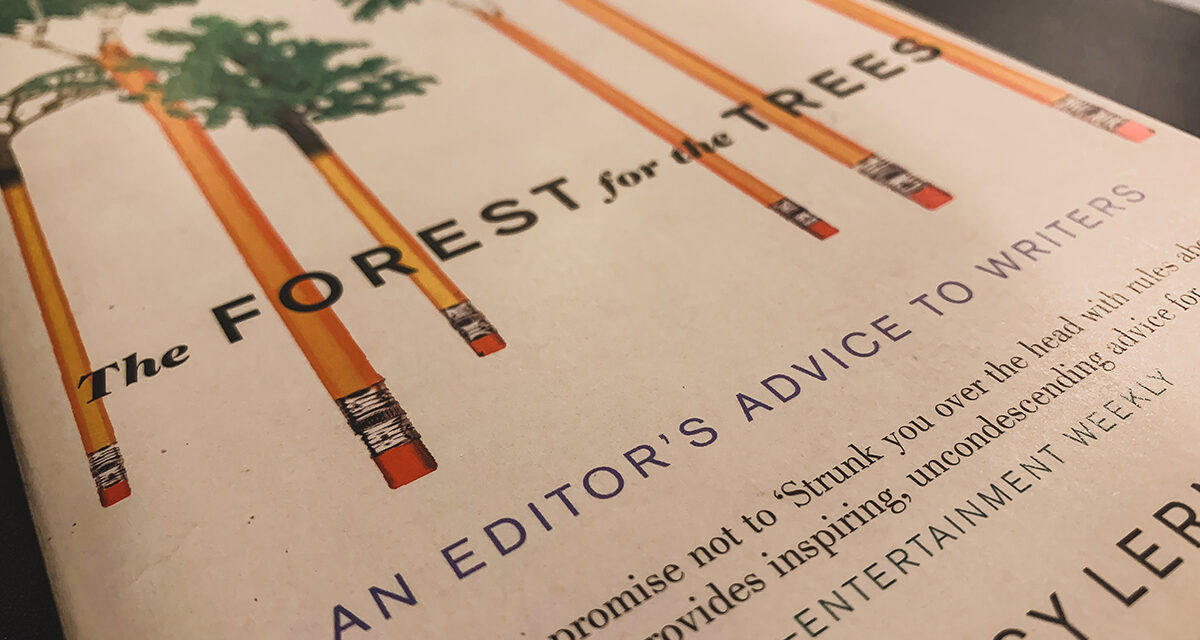In The Forest for the Trees, editor Betsy Lerner gives a real-life view of the world of book publishing, editing, writing, and their intersections. She shines the light bright in every corner, leaving no stone left unturned.
From the beginning, I immediately loved reading about Betsy’s professional journey. Step by step, she went from poet to editor, to agent, and beyond. It shows that each position or place we find ourselves in life will lend itself to being a building block for our future knowledge and skills.
What I Learned From the Forest for the Trees
Writers are lonely creatures who often write into the vacuum or void — the endless space that is the computer’s word processor or physical notepad and pen. Sometimes, the written word never sees another set of human eyes.
The Forest for the Trees gives friendly advice to that writer who feels trapped on a secluded island without a guide.
- Types of Writers — In the beginning of the book, Lerner gives an overview of the different writer types; ambivalent, natural, wicked child, self-promoter, neurotic, and touching fire. There are many writing types, but the advice above all is to become a writer, you must write. Continue to know your weaknesses and fix them. The more your writing is an obsession, the more you’ll have a chance for success, as writing relies on the process of trial and error.
- Seeking Agents for Publication — For most, an agent will be needed to get your work read. It’s possible and a chance you could be noticed without an agent, but it’s a rarity. Much like seeking a job, well-written cover letters and educated language must bring a manuscript to a new editor or agent. First impressions are everything — and everyone in the industry wants to be dazzled with something fresh, smart, and polished. Above all, do your research before making contact with a professional.
- Relationships with Agents — 15% is a standard cut for agents selling your manuscript to publishers, and you have the right to take precautions when choosing your agent, as you want to ensure your agent believes in you for the long-term. Make sure you have a full understanding of whatever contracts or agreements you stand as the best writer-agent relationships are built on trust.
- Rejection — As a writer, you must be comfortable with rejection, as come it will. Betsy Lerner believes success is a game of odds instead of luck, so you must try, try again, submit, submit again, and you will find yourself on top in the long-run.
- Working with Editors — There are many editors, and only the writer will know how well an editor edits. Although editors should be willing to massage a work over and over to get it right, it’s always satisfying from the perspective of an editor to receive a written piece that’s already been perfected.
- The Publishing Process — The publishing process takes longer than most people would think, at nine months, which includes book copyediting, design and typeset, proofreading, cataloging, jacketing, and manufacturing. With correct timing, marketing and connections have been made during the publishing process so that the book can be distributed to bookstores and other channels as soon as the book is printed. Find a publisher who is clear in their deliverables so that you’re on the same page and have the same expectations throughout the publishing process. To avoid jacket publishing disasters, the editor and author should also be on the same page and have the same vision before spending on design.
All in all — the process of preparing a book from idea, to manuscript, to hitting the bookshelf is a whirlwind, wild experience, but Betsy Lerner does a fantastic job of taking you through the entire publishing process in The Forest for the Trees.
Pick up the pen, don’t hesitate any longer, and start working on that novel idea you’ve had all these years…there’s a world of editors, agents, publishers, and readers who are ready to assist.





